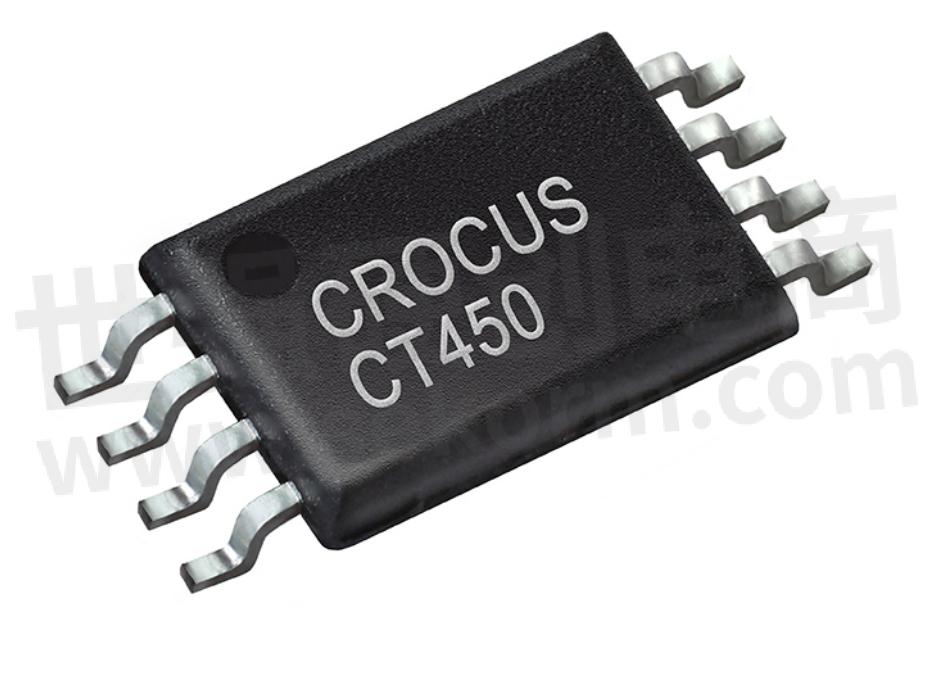Crocus Technology’s new line of contactless current sensors with a signal-to-noise ratio as high as 77 dB

Posted July 19, 2022, by Matt Cousineau & filed under Newswire, The Tech.

Sensor technology company Crocus Technology has announced a new line of contactless current sensors it says have a signal-to-noise ratio as high as 77 dB and the capacity to measure currents between 500 mA and 1,800 A.
“With the introduction of the CT45x family of contactless current sense products, we now have a complete portfolio of products for our customers from small currents to larger currents,” said CEO of Crocus Technology Zack Deiri. “This product based on Crocus’s cutting-edge TMR technology is the most exciting for us as the benefits of our XtremeSense TMR are addressing the needs of higher-current applications that can’t be met with existing solutions without compromises. Crocus is addressing new high-current markets such as BMSs, inverters, DC/DC converters, and many others.”
The CT45 product line includes two components from the company’s proprietary XtremeSense Tunnel Magneto-Resistive (TMR) technology, which sense and reject external magnetic fields. The company says, “The dual TMR elements provide greater than 50 dB immunity to external magnetic fields, enabling manufacturers to eliminate costly shields, concentrators, and cores.”
The CT450 and CT452 are 5 V versions and the CT453 is a 3.3 V version. The CT450 has a TSSOP-8 package and the CT452 and CT453 are available in a TSSOP-16 package.
The company says the CT452 and CT453 have integrated Common Mode Field Rejection (CMFR) with more than 90% immunity, 0.7% accuracy, 1 MHz in bandwidth, and the ability to be installed over or under the current-carrying busbar.
- 【Datasheet】CT453 XtremeSense® TMR Coreless, Differential and Contactless Current Sensor with Programmable Gain
- 【Datasheet】CT453 XtremeSense® TMR Coreless, Differential and Contactless Current Sensor with Programmable Gain
- 【Datasheet】CT453 XtremeSense® TMR Contactless Current Sensor
- 【Datasheet】CT452 XtremeSense® TMR Coreless, Differential and Contactless Current Sensor with Programmable Gain
- 【Datasheet】CT452 XtremeSense® TMR Coreless, Differential and Contactless Current Sensor with Programmable Gain
- 【Datasheet】CT450 XtremeSense® TMR Contactless Current Sensor with 1 MHz Bandwidth and Programmable Gain
- 【Datasheet】CT450 XtremeSense® TMR Contactless Current Sensor with 1 MHz Bandwidth and Programmable Gain
- 【Datasheet】CT452 XtremeSense® TMR Contactless Current Sensor
- 【Datasheet】CT450 XtremeSense® TMR 1 MHz Bandwidth Contactless Current Sensor with <1% Total Error
- 【Datasheet】CT453 XtremeSense® TMR Contactless Current Sensor with Common Mode Field Rejection, 1 MHz Bandwidth and <1% Total Error over Full Operating Temperature Range
- 【Datasheet】CT452 XtremeSense® TMR Contactless Current Sensor with Common Mode Field Rejection, 1 MHz Bandwidth and <1% Total Error over Full Operating Temperature Range
- +1 Like
- Add to Favorites
Recommend
- Crocus CT45x Family’s XtremeSense TMR Sensors Deliver High Precision and High Current Measurements for EV Motor Control
- Crocus Technology TMR Sensors such as CT430/1 Have the Most Reliable and Efficient Performance in Overcurrent Protection
- The CT45x showcases the advantages of TMR sensors to rethink and simplify solutions in the high precision, high current application space
- Nxp Licenses Advanced TMR Sensor Technology From Crocus Technology
- US Patent and Trademark Office rules in favor of Crocus Technology in patent invalidation case
- Crocus Technology Acquired by Allegro MicroSystems to Accelerate Innovation in TMR Sensing Technology
- Crocus Technology and TowerJazz Qualified CTSX Magnetic Sensors and Volume Manufacturing Launched
- Crocus TMR Sensors with Higher Sensitivity, Better Linearity and Less Temperature Sensitivity Are Becoming More Popular in EV BDUs
This document is provided by Sekorm Platform for VIP exclusive service. The copyright is owned by Sekorm. Without authorization, any medias, websites or individual are not allowed to reprint. When authorizing the reprint, the link of www.sekorm.com must be indicated.





























































































































































































































































































































































































































































































































































































































































































































































































































































































